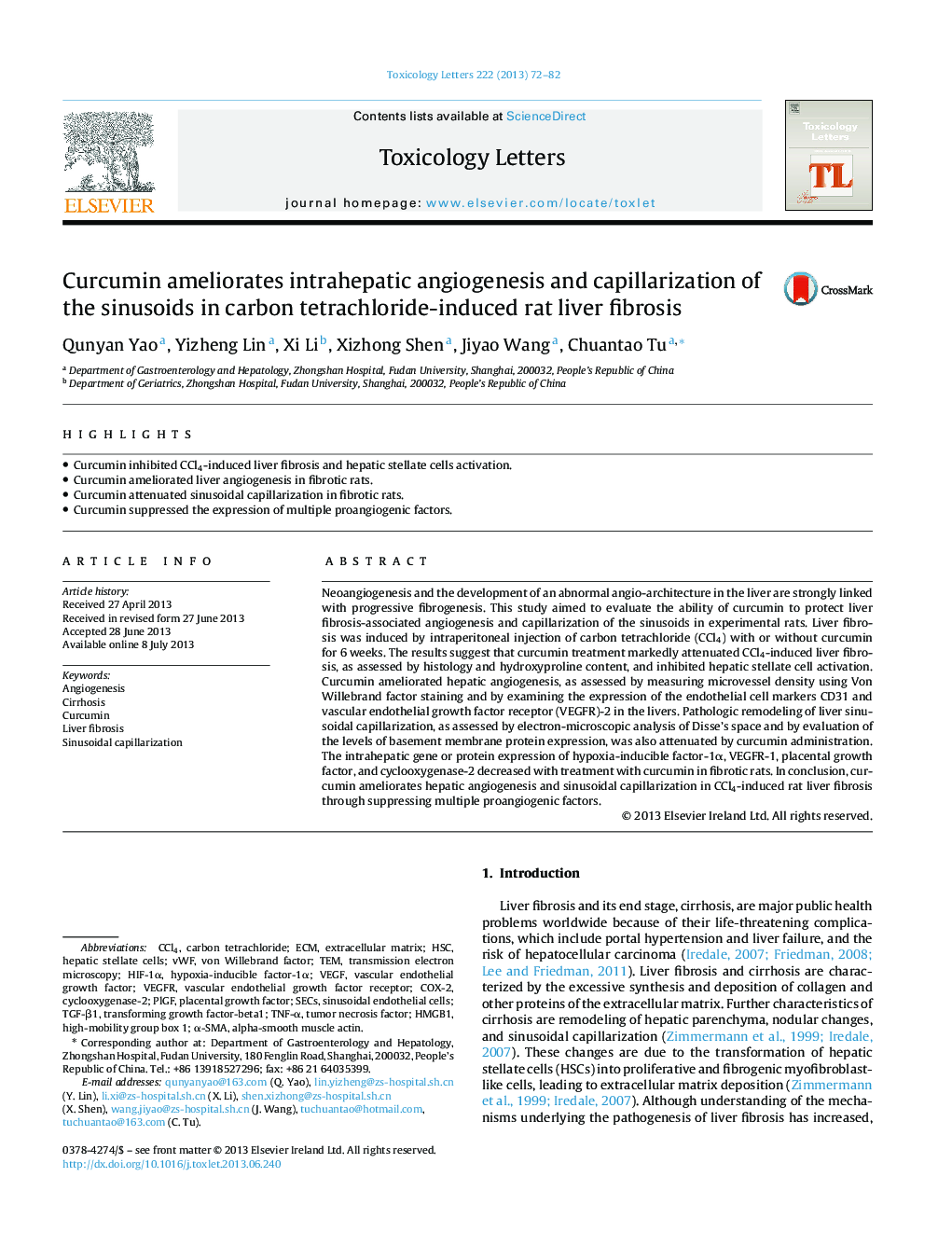| کد مقاله | کد نشریه | سال انتشار | مقاله انگلیسی | نسخه تمام متن |
|---|---|---|---|---|
| 2599228 | 1133197 | 2013 | 11 صفحه PDF | دانلود رایگان |

• Curcumin inhibited CCl4-induced liver fibrosis and hepatic stellate cells activation.
• Curcumin ameliorated liver angiogenesis in fibrotic rats.
• Curcumin attenuated sinusoidal capillarization in fibrotic rats.
• Curcumin suppressed the expression of multiple proangiogenic factors.
Neoangiogenesis and the development of an abnormal angio-architecture in the liver are strongly linked with progressive fibrogenesis. This study aimed to evaluate the ability of curcumin to protect liver fibrosis-associated angiogenesis and capillarization of the sinusoids in experimental rats. Liver fibrosis was induced by intraperitoneal injection of carbon tetrachloride (CCl4) with or without curcumin for 6 weeks. The results suggest that curcumin treatment markedly attenuated CCl4-induced liver fibrosis, as assessed by histology and hydroxyproline content, and inhibited hepatic stellate cell activation. Curcumin ameliorated hepatic angiogenesis, as assessed by measuring microvessel density using Von Willebrand factor staining and by examining the expression of the endothelial cell markers CD31 and vascular endothelial growth factor receptor (VEGFR)-2 in the livers. Pathologic remodeling of liver sinusoidal capillarization, as assessed by electron-microscopic analysis of Disse's space and by evaluation of the levels of basement membrane protein expression, was also attenuated by curcumin administration. The intrahepatic gene or protein expression of hypoxia-inducible factor-1α, VEGFR-1, placental growth factor, and cyclooxygenase-2 decreased with treatment with curcumin in fibrotic rats. In conclusion, curcumin ameliorates hepatic angiogenesis and sinusoidal capillarization in CCl4-induced rat liver fibrosis through suppressing multiple proangiogenic factors.
Journal: Toxicology Letters - Volume 222, Issue 1, 12 September 2013, Pages 72–82